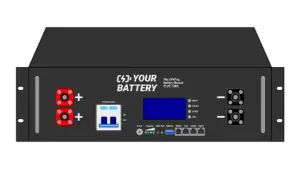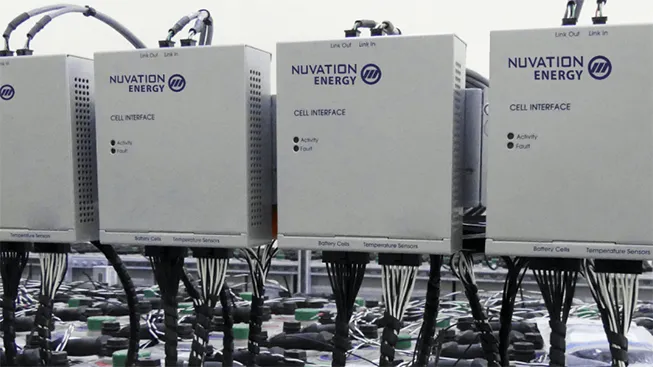October 27, 2025
Defining Your Custom Battery Management System Requirements

When developing a new battery-powered product or energy storage system, selecting the right Battery Management System (BMS) is a critical step. The BMS functions as the control center of any modern battery pack, responsible for ensuring safety, performance, and reliability. Determining the specific requirements for that BMS, calls for looking carefully at the application and its operating environment.
This article provides a structured framework to begin defining those requirements. It will guide you through the key technical and system-level considerations that should be clarified before moving into detailed design or specification development. Establishing these parameters early ensures that engagement with the engineering team is focused, efficient, and aligned with your application goals.
When selecting a BMS, there are two main paths to consider. Off-the-shelf products can meet many system level requirements, while a custom BMS may be better suited for projects with specific technical or commercial objectives.
Off-the-shelf BMS solutions, including Nuvation Energy’s configurable standard product line, are effective when:
- The system operates within compatible voltage, current, and temperature ranges.
- Configuration flexibility (such as adjustable voltage limits, communication protocols, and safety protections) is sufficient to meet design goals.
- Time-to-market is a higher priority.
A custom BMS is the preferred option when:
- The application has unique electrical, software, or mechanical requirements.
- Deeper system integration or specialized control functions are needed.
- The project targets aggressive cost or performance objectives.
It is also important to distinguish between engineered BMS solutions and low-cost generic BMS products, often from overseas, little known, new, or otherwise hard to assess vendors. While inexpensive alternatives may appear attractive initially, they often lack the reliability, compliance, and longevity required to meet evolving safety and certification standards.
With these distinctions in mind, the next step is to examine the core elements that influence an effective custom BMS design.
So, what should you be thinking about before we talk? Keep reading to explore the areas that our extensive experience tells us matter most.
Key Considerations in Custom BMS Design
Cells: The Foundation
The foundation of any custom BMS design is the cell itself. Every subsequent design consideration, including topology, balancing, communication, safety logic, depends on the chemistry and characteristics of the selected cell type, along with the core sensing and protection functions the BMS must provide. To make one note – this is different in a standard product like we also make at Nuvation Energy. Standard products need flexibility for multiple cell types. This contrasts to what we’re now looking at here, a custom BMS which should usually be well tuned to the cell, to optimize for calendar and schedule.
Chemistry
- Different chemistries have different requirements. Lithium iron phosphate (LFP) offers a wide safety margin but lower energy density, while NMC chemistries offer higher energy but demand stricter protection.
- Chemistry also influences voltage thresholds, thermal management, balancing needs, cycle-life expectations, and even the type of algorithms needed for state-of-charge (SoC) estimation. (For example, LFP cells are trickier due to their flat voltage curve and hysteresis).
- Alternative or experimental chemistries: While lithium-based cells dominate the market, other chemistries (such as lithium-sulfur, solid-state, or other emerging technologies) can have unique voltage, thermal, and balancing requirements, and may require different monitoring and protection strategies.
Voltage Range
- A BMS must define and enforce safe operating limits: over-voltage, under-voltage, charge/discharge windows, and temperature.
- These thresholds vary widely, and even within a single chemistry, manufacturers may specify slightly different safe limits.
- In many applications, it’s not just about tripping a hard cutoff. The BMS may also define proportional behavior, such as gradually limiting current as you approach voltage or temperature boundaries, to protect the cells and extend usable performance.
Balancing Strategy
- Do you need passive balancing, which is simpler and less expensive but dissipates excess energy as heat?
- Or active balancing, which is more complex and expensive but can improve pack performance and lifespan?
A clear understanding of the cell’s chemistry and performance characteristics establishes the basis for all BMS monitoring and protection requirements. short: knowing your cell chemistry and performance expectations are the first steps in defining what the BMS must monitor and protect.
Modules and Stacks: The Building Blocks
Once cell chemistry and performance parameters have been defined, the next step is determining how the cells will be arranged into modules and stacks. This is where electrical architecture starts to shape the BMS requirements.
Topology
- Are you building series strings, parallel groupings, or a hybrid structure? (Note: some consumer tools, like the DeWalt FlexVolt system, actually switch between series and parallel arrangements depending on whether they’re charging or discharging.)
- How many cells per module, and how many modules per stack? (Note: for one of our projects, we worked with a 270S1P NiMH pack that dynamically converts to 30S9P during charge and standby, and we designed a custom BMS to handle this flexible topology.)
Current Measurement, State of Charge (SoC), and State of Health (SoH)
- How precise does your current measurement need to be?
- Do you need advanced SoC and SoH estimation, or is a simpler coulomb-counting approach sufficient?
- Beyond measurement, you’ll also need to define current limits for both discharge current and charge current. These limits protect cells, disconnects, and interconnects from overstress and help coordinate with other system components (such as the PCS/inverter).
- For applications like stationary storage, advanced algorithms may be worth the complexity. This can be another area that also pushes for a further look at standard products that have extensive developments into advanced algorithms.
Disconnects and Fusing
- Every stack or module typically needs a way to disconnect safely during faults or maintenance.
- Electromechanical disconnects (contactors, relays) are common for high-current systems.
- Solid-state disconnects (semiconductors such as MOSFETs or solid-state relays) offer faster response and fewer moving parts, smaller size, and potentially lower lifecycle costs in some scenarios. They do require careful thermal management and design trade-offs.
- Disconnects may be placed on the low side, high side, or both, depending on system design.
- Manual disconnects, such as breakers that double as protective devices, may also be required.
- Selecting the right combination of automatic and manual disconnects is key for both safety and serviceability.
Pre-Charge
- Large capacitive loads (inverters, converters) can draw damaging inrush currents if connected without care.
- Pre-charge also matters when connecting multiple stacks together. If their voltages are mismatched, the initial equalization current can be substantial and destructive.
- A BMS typically manages pre-charge, either passively (through resistors) or actively (through controlled electronics).
- Choosing the right strategy balances safety, component stress, and cost.
This stage ensures the BMS not only monitors cell performance but also manages how modules and stacks operate together in a cohesive energy system.
Pack and System-Level Integration: The Coordination Layer
At the highest electrical level, the BMS must operate as part of a complete energy storage system, even if it’s just a few cells. The BMS role then extends beyond monitoring to include coordination, control, and communication across system components.
- System Control Architecture: some systems rely on a dedicated Energy Management System (EMS) that coordinates the BMS and the Power Conversion System (PCS, e.g. the inverter).
- Note: In this article, Energy Management System (EMS) refers broadly to the control layer above the BMS that coordinates the PCS and other subsystems. Terminology varies across the industry.
- In other cases, the PCS queries the BMS directly, handling higher-level decisions about charging, discharging, and protection.
- In more embedded applications, the BMS itself can take the lead, directly managing charge and discharge without a separate EMS or PCS.
- The right architecture depends on your application and the ecosystem of devices around the pack.
Connection Sequence
- When multiple stacks connect to a common DC bus, coordination becomes critical.
- In some designs, the EMS cycles packs on and off the bus to bring the common DC voltage close enough for safe connection.
- In other cases, modules include a built-in charger that lets them charge from the DC bus until they reach a compatible voltage, at which point they connect directly.
- The BMS must support the chosen connection sequence strategy, since it affects both safety and system-level coordination.
Aggregator Device
- A dedicated aggregator can be used to collect and process data from multiple modules. In systems with a dedicated EMS, the EMS can fulfill this role.
- Alternatively, a single module can act as the aggregator while the remaining modules operate as subordinates.
- The chosen approach affects system redundancy, latency, and overall system complexity.
Interfaces
- Communication is a critical aspect of BMS design. It includes not only external connections but also coordination between BMS units, the EMS, and the PCS/inverter.
- Common options include RS-485, CAN bus, and Modbus TCP. Each offers different advantages in terms of speed, compatibility, and system integration.
- In addition to data communication, the BMS may incorporate several local interface and control features, such as:
- Indicators: LED or panel indicators for power and status.
- Displays: LCD display to SoC and status.
- Buttons: Inputs for navigating a menu on the display.
- Auxiliary control: Outputs to control fans, heaters, or pumps.
- E-stop integration: Input from emergency stop circuits, and the ability to safely open disconnects in response.
- Defining these interface requirements early ensures the BMS can support both system-level communication and localized control functions without the need for later design modifications.
A well-designed BMS functions as an integral component of the overall energy storage system. The system architecture should guide the BMS design to ensure alignment with performance, safety, and communication objectives.
Safety and Compliance: The Regulatory Framework
Even the most advanced technical design can be compromised if it fails to meet regulatory standards and requirements. Compliance has become an essential element of product development and often a prerequisite for market entry.
Application-Driven Standards
- Different applications (stationary storage, mobility, industrial backup, etc.) fall under different rule sets.
- For example, stationary storage in North America often requires UL 1973 certification, while mobility applications may involve ISO 26262 functional safety.
Functional Safety
- UL and IEC standards increasingly demand functional safety analysis, redundancy, and fail-safe operation.
- These requirements must be considered from day one, as they cannot be easily retrofitted into a completed design.
Other Regional/Market Standards
- Country/region-specific certifications, like CE in Europe for example, may apply depending on your target market.
Addressing compliance early in the design process can prevent costly rework and significantly reduce time to certification.
Practical Considerations: The Real-World Constraints
No discussion of requirements is complete without practical constraints that shape feasibility and guide design trade-offs.
Target Cost
- Cost extends beyond the bill of materials and direct manufacturing expenses. Testing, certification, and compliance activities can contribute significantly to the overall expenses.
- Defining cost targets early ensures that design decisions align with budget expectations and the system can scale realistically.
Manufacturing Location
- Where the BMS will be built (and integrated with your pack) can influence both design and regulatory pathways.
- Domestic vs. offshore production may affect sourcing, certification, and logistics.
Timeline
- Project timelines vary depending on whether the objective is a rapid prototype or a fully certified production system. The schedule influences the design approach, determining how aggressive development can be and what level of testing is practical in the early stages. These factors often determine the difference between a successful product launch and a delayed or stalled project.
Clear alignment on cost, manufacturing, and timeline enables the development of solutions that are both practical and achievable. The objective is to balance technical innovation with commercial feasibility, ensuring the final design meets real-world performance and business goals.
Defining the Right Path Forward
The broad range of considerations outlined above reflects the complexity of modern energy storage design. To address this diversity, Nuvation Energy’s standard BMS platform is engineered to be among the most configurable BMS in the industry.. With thousands of configuration registers, it adapts to a wide range of system architectures without requiring full hardware redesign. Each configuration maintains compliance with safety and performance standards, providing a proven foundation for most applications.
However, no standard solution can meet every scenario. Projects with unique topologies, aggressive target costs, specialized features, or unique integration needs, often benefit from a custom BMS. Nuvation Energy’s expertise in battery management system design services (BMSDS)
enables us to translate complex requirements into robust, application-specific architectures, whether by configuring our standard product or developing something purpose-built.
Whether your system requires a configurable standard solution or a purpose-built design, our team can help define the right path. Drawing on our decades of experience across multiple industries, we balance technical needs, regulatory compliance, and commercial objectives to deliver systems optimized for your situation.
Next Steps
If you are planning a new battery-powered system or improving an existing design, Nuvation Energy can support every stage of your BMS development process
- Contact our team to discuss your application in detail. We will review your requirements and outline a tailored path forward based on your technical and commercial objectives
- Explore our BMS Design Services Page to learn more about our process, field-deployed project examples, and understand how we take systems from initial requirements to certified production hardware
Whether you are defining a new specification or refining an existing one, our engineering team can help you build a BMS solution optimized for performance, safety, and long-term reliability.

